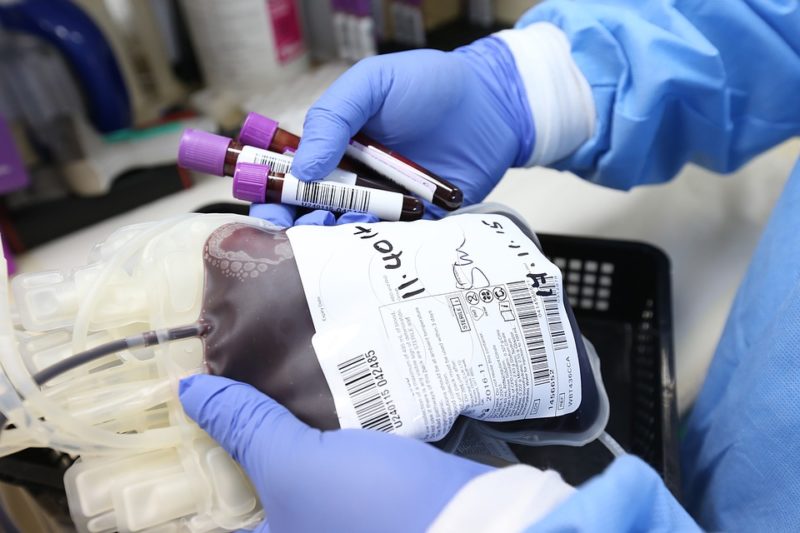How to lower hematocrit for plasma donation? If low hematocrit levels are harmful, having a high hematocrit level is dangerous as well. If you do not know yet, hematocrit refers to the number of red cells present in your blood in percentage by volume.
White blood cells, platelets, and red blood cells are all dispersed in plasma, found in our blood. These components make up 45% of your blood. Therefore, each of them has its corresponding percentages.
That is why your platelet levels can be low, but your red blood cells have high volume levels, which could indicate certain diseases. Learn more about hematocrit levels and their importance as you read on. So without further ado, let’s start!
Learn What The Normal Hematocrit Level Is
The normal hematocrit levels differ by age, gender, and race. For women, the usual range is 36-44 percent, as for men, it’s around 41-50 percent. Having too few red blood cells is known as anemia when one’s hematocrit is lower than normal. On the other hand, a hematocrit above the average level indicates an excess of red blood cells. That might be a sign of polycythemia or erythrocytosis.
Why Is It Important To Check Hematocrit Levels?
If you have symptoms of anemia, polycythemia, erythrocytosis, your doctor may order a hematocrit test. Anemia manifests as having shortness of breath, lightheadedness, and tiredness. Polycythemia is characterized by symptoms such as itching, excessive perspiration, headaches, and fatigue. At the same time, Erythrocytosis symptoms include nosebleeds, dizziness, headaches, and shortness of breath.
Ways To Lower Your Hemoracrit Levels
The accumulation of red blood cells that occurs with an elevated hematocrit level increases your risk of thrombosis, leading to stroke or heart attack. Normal hematocrit levels are preferred. Thus raising yours is a serious matter that needs to be addressed immediately. Learn more about what hematocrit is here. Regardless, we gathered all the steps on how to lower hematocrit for plasma donation, and here they are:
#1. Be active
Make sure to do physical activities gradually and moderately. Never let yourself become exhausted while participating in any physical activity, as the body utilizes more oxygen from our blood. Stop exercising if you become dizzy.
#2. Keep hydrated
Lack of bodily fluid dilutes the blood, causing hematocrit levels to rise and the volume of plasma and blood to increase due to dehydration. As a result, staying hydrated is critical to avoid a spike in your hematocrit levels. Prevent dehydration by increasing your daily fluid intake. Eight glasses of water a day is the minimum amount that you should consume.
#3. Try taking aspirin
Taking an aspirin a few times a month will help clot prevention by diluting the blood. In addition, high hematocrit levels result in thicker blood, which aspirin helps to avoid. Nonetheless, two aspirin per month is plenty; don’t go overboard with the use of this medication. Small cuts could bleed too much if you take lots of aspirin. However, make sure to ask for your doctor’s advice first before taking aspirin.
#4. Stop smoking
Because tobacco affects the oxygen-carrying red blood cells, it harms blood flow. Smoking reduces oxygen levels in the blood, which causes the bone marrow to create more red blood cells, raising the hematocrit.
#5. Change your diet
Reduce your hematocrit by changing your typical diet. Here are some pointers to help you out:
Increase your intake of antioxidant-rich meals, which help your body’s oxygen delivery. Blood flow is made easier by antioxidants, which assist oxygen in the blood. Foods that are high in antioxidants include prunes, berries, and beans. A recent study found that consuming half a grapefruit each day reduces hematocrit levels due to naringin, a flavonoid that aids in the removal of red blood cells naturally. It’s best to stay away from foods high in iron, which your body needs to make hemoglobin.
Try to limit your intake of high-iron foods like spinach and broccoli to keep your iron levels in check. Diuretics such as alcohol and caffeine can cause dehydration because they cause you to pee. If you want to lower your hematocrit, stick to water or unsweetened juices
#6. Don’t live in high places
If your home is 2,000 meters above sea level, it is thought to boost hematocrit levels in the blood because the bone marrow creates more red blood cells to make up for the lower oxygen levels in these areas. To avoid this, stay in low-lying locations. And these are what you can do to lower your hematocrit levels. If you are interested in plasma donation, make sure that your hematocrit levels are on average. That’s why medical experts will test you first if you are fit to donate. Then, if they find something, they will inform you about that and tell you what to do, so make sure to follow their instruction.
On the other hand, are you curious where your blood donation goes? If so, read this article with the topic “where does my blood donation go?” On the other hand, we hope that we have helped you and answered your queries. Thanks for your time!
Conclusion
How to lower hematocrit for plasma donation? The best way to lower your hematocrit levels before donating is to keep yourself hydrated, exercise regularly, avoid iron-rich foods, or take aspirin only if approved by a doctor. For your information, to reduce hematocrit levels, one option is to donate blood. Donating blood helps to cleanse and revitalize your body while also removing any excess iron. If you also wish to lower your hematocrit levels, this is a great option for you!
Well, that is all for today. If you want to read more articles from us, here is one with the topic, “What is donation?” We are all aware that donating is giving something to others without expecting it in return, but read this article and learn more about donation. You may also read about why was my blood donation rejected.

